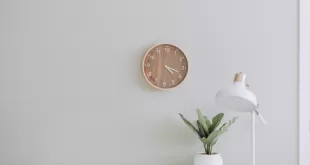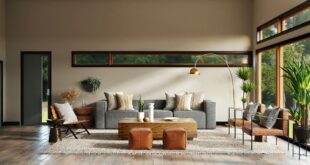Regarding marble prices in Kuwait, they can vary depending on the quality and type of marble you are looking for. There are, however, a couple of tricks that will help you save the most money on marble.
Find out about the different kinds of marble, how to pick the right ones for your home, and more by reading this article!
So, if you’re searching for apartments for rent in Kuwait, apartments for rent in Salmiya, and apartments for rent in Salwa, you can start thinking of what your floor should look like.
Right here, on this page, is everything you need to know.
Why Are Marble Prices in Kuwait Different?
If you’re looking to buy marble in Kuwait, you’ll notice that prices can vary significantly from one store to the next. So what’s behind these differences?
Many factors come into play when setting marble prices in Kuwait. First, the quality of the marble is a big factor. Better marble will fetch a higher price than lower quality stone.
Another factor is the availability of the marble. If there’s high demand for a particular type of marble but limited supply, then prices will naturally be higher. On the other hand, if there’s a plethora of marble to go around, prices will be more competitive.
Finally, transport costs can also have an impact on prices.
So, that brings us to the most significant second point.
What are Types of Marble and How to Choose Them
Marbles are a popular decorative item used in many homes and public areas. They’re made from several varieties of natural stone and can be found in many colors. Many people love marble for its beauty, versatility and timeless elegance. Choosing the suitable marble for your home involves considering several factors, such as color and pattern. Before settling on marble for your home, consider a few key factors.
Natural Marble
Natural marble is an ideal candidate for modern home décor. It brings a sleek, modern look that blends well with most interior design themes. A white Carrara marble looks particularly imposing in high-traffic areas of your home, such as hallways and living rooms. This marble is also easy to maintain; you only have to clean it with a nonabrasive cleanser and a soft cloth every few months. Limestone also works well in kitchens and bathrooms due to its porous nature. Onyx marble is the most resistant to dirt and wear and can look plain or monochromatic. That is because its surface has no patterns or veining. However, onyx does have a beautiful appearance under different lighting conditions. Limestone is also highly resistant to heat, so that it can withstand high temperatures without damage.
Pros:
Natural marble is beautiful and unique. No two pieces are alike, so you can be sure your home will have a one-of-a-kind look. Natural marble is also very durable; its heat resistant and scratch resistant, so that it can last for many years with proper care.
Cons:
Natural marble is costly. It’s also relatively soft, so it can etch easily and stain if not sealed properly. However, because of its porous nature, marble can quickly become stained and dirty if left uncleaned. If you’re considering using natural marble in your home, carefully weigh the pros and cons before making a decision.
Cultured marble
Cultured marble is a man-made stone made from ground-up limestone and polyester resin. It is often used for countertops, showers, and other bathroom fixtures.
Pros:
Compared to the cost of a quarried product, the price of a cultured marble counter or fitting is much lower.
Cultured marble provides a sturdy surface without the practical issues associated with tile.
If you decide on this, you won’t have to worry about cleaning grout, adjusting for surface changes, or dealing with problems during food preparation.
Cons:
Cultured marble is made entirely in a factory; thus, if damage occurs, you may be limited in your ability to fix it.
Since it combines stone particles and resins, removing unsightly scratches from the surface might be difficult.
Most homeowners find it helpful to stick with one factory for multiple needs rather than purchasing the cheapest item from any factory due to differences in the quality control of the finished products.
Resin and marble dust are typically combined in smaller plants, which sometimes operate on narrow margins.
Other Things You Should Consider When Installing Marble in Kuwait
1- Stone floors made of marble shouldn’t always look polished
Choose carefully amongst the marble kinds that feature glossy and matte textures.
The most sought-after finish for marble floors is a high sheen, accomplished using a stone-polishing machine to grind the surface.
When marble is polished, its natural veining is seen, giving the floor a brilliant, opulent appearance.
If you take care of it properly, polished marble can seem like new for years.
2- Most household installations of marble tiles are for sizes less than two feet across
Marble flooring tiles range in size from 2 inches by 2 inches to 6 feet by 8 feet.
Regarding home use, marble tiles rarely get bigger than 2′ by 2′ because of the weight and difficulty of installing more giant, heavier slabs.
Large slabs like these are rarely seen outside of public and commercial structures.
3- When wet, the polished marble’s lustrous sheen becomes dangerously slippery
Due to its slippery nature, polished marble is not a good choice for households with elderly or infirm inhabitants.
To lessen the risk of slipping on polished marble, you can either spread out several rugs with non-slip backing or treat the floor with an anti-slip solution like SlipDoctors’ Stone Grip Anti-Slip Treatment.
Products marketed as “non-slip” are made to improve the surface’s grip traction without dulling its sheen.
Floors made of honed marble are inherently safer than those made of polished marble.
Marble Prices in Kuwait
- the Egyptian company Sunny Minia: 4 dinars per square meter
- the Egyptian company Salvia Drawer: 6 dinars per a square meter
- The Omani marble company Desert Designs: 10 dinars a square meter.
- The Omani Traventino Company: 13 dinars. It also produces natural types for 16 dinars per square meter.
- The Omani company Menwooden Gray Stands: at 15 dinars/meter.
- Types of granite for kitchens and their prices, produced by the Sultanate of Salalah, Oman, start from 9 dinars/meter.
- The marble price in Kuwait imported from Turkey starts from 10 dinars/meter.
There are wide varieties of marble, so it takes research to find the marble that best suits your needs. Each marble has unique characteristics that make it perfect for specific applications. Set your budget and pick what makes your home shine.
 مدونة سكن مدونة موقع سكن
مدونة سكن مدونة موقع سكن








